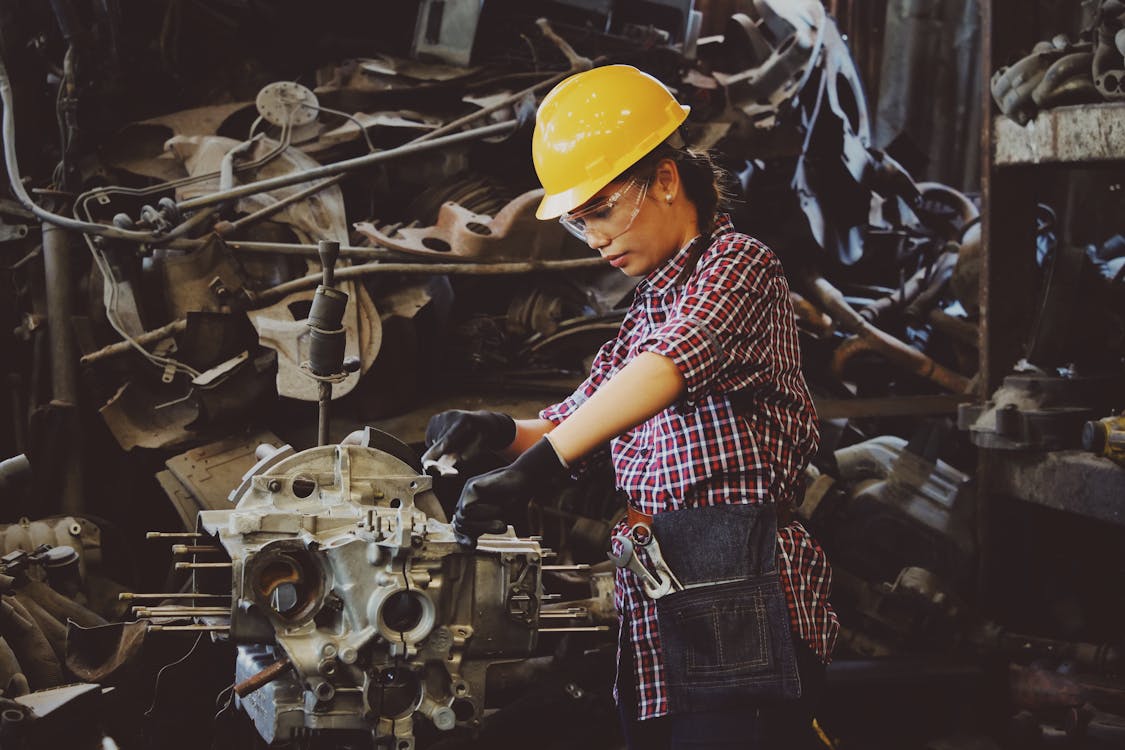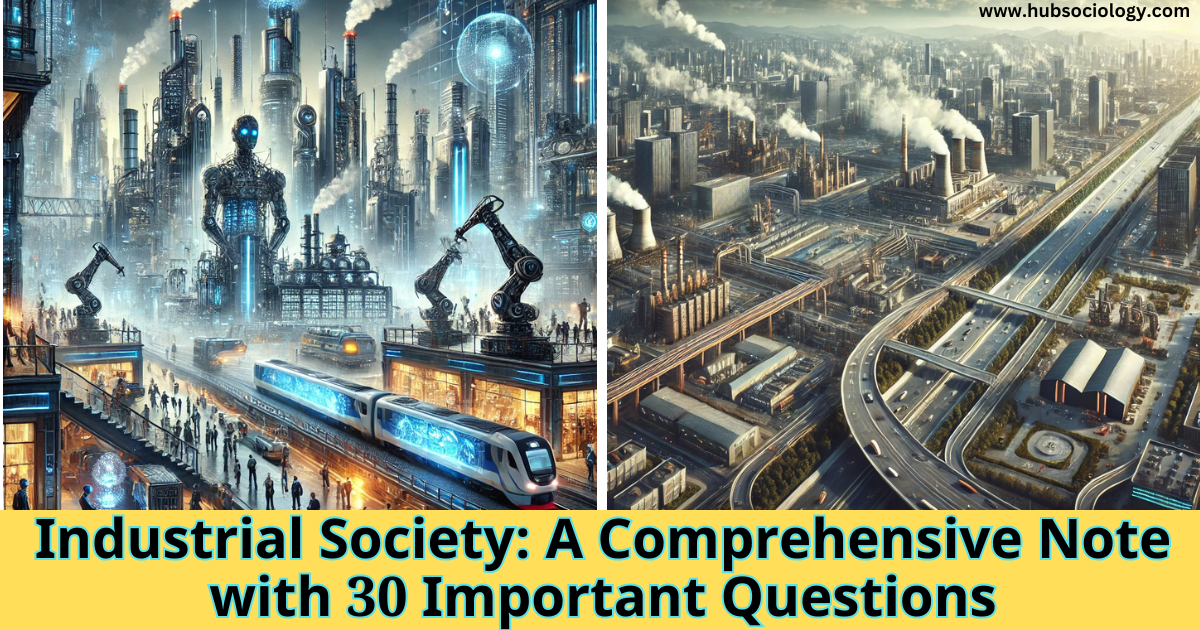
Industrial society represents a transformative phase in human history, marking the transition from agrarian-based economies to industrialized, urbanized, and technologically advanced systems. This shift, which began in the late 18th century with the Industrial Revolution, has profoundly reshaped social structures, cultural norms, and individual lives. Sociologists have long studied industrial society to understand its implications on human behavior, social organization, and the broader societal framework. This article explores the concept of industrial society from a sociological perspective, incorporating insights from prominent sociologists and examining its defining characteristics, challenges, and enduring legacy.
Defining Industrial Society
Industrial society is characterized by the mass production of goods, the use of machinery, and the rise of factories as central economic institutions. It emerged as a result of technological advancements, such as the steam engine, which revolutionized production processes and enabled the efficient manufacturing of goods on a large scale. Sociologist Herbert Spencer, a prominent figure in the study of industrial society, described it as a system driven by differentiation and specialization. In his view, industrial societies are marked by complex divisions of labor, where individuals and institutions perform highly specialized roles to maintain societal functioning.
Emile Durkheim, another foundational sociologist, further elaborated on this concept in his work The Division of Labor in Society (1893). Durkheim argued that industrial societies are held together by “organic solidarity,” a form of social cohesion based on interdependence. Unlike traditional societies, which rely on “mechanical solidarity” rooted in shared beliefs and values, industrial societies thrive on the interconnectedness of specialized roles. Durkheim noted, “The division of labor is not peculiar to the economic world; we can observe its growing influence in the most varied fields of society.”
Characteristics of Industrial Society
- Urbanization: One of the most visible features of industrial society is the migration of populations from rural areas to urban centers. Cities became hubs of economic activity, offering employment opportunities in factories and industries. This urbanization led to the growth of metropolitan areas and the development of new social dynamics. Sociologist Louis Wirth, in his seminal essay Urbanism as a Way of Life (1938), highlighted how urban environments foster anonymity, diversity, and a focus on secondary relationships, contrasting sharply with the close-knit communities of rural life.
- Technological Advancement: Industrial societies are defined by their reliance on technology to drive economic growth and improve living standards. The proliferation of machinery, automation, and later, digital technologies, has transformed production processes and created new forms of work. Max Weber, a key figure in sociology, examined the rationalization and bureaucratization of industrial societies. In The Protestant Ethic and the Spirit of Capitalism (1905), Weber argued that the rise of industrial capitalism was closely tied to the rational pursuit of efficiency and profit.
- Class Structure and Inequality: Industrial societies are often marked by distinct class divisions, particularly between the bourgeoisie (owners of the means of production) and the proletariat (working class). Karl Marx, in his critique of industrial capitalism, emphasized the exploitative nature of this relationship. In The Communist Manifesto (1848), Marx and Engels wrote, “The history of all hitherto existing society is the history of class struggles.” Industrial society, in their view, perpetuates inequality by concentrating wealth and power in the hands of a few while alienating the majority of workers from the fruits of their labor.
- Cultural Shifts: The rise of industrial society brought about significant cultural changes, including the decline of traditional religious authority and the rise of secularism. Sociologist Anthony Giddens, in his analysis of modernity, argued that industrial societies are characterized by a “disembedding” of social relations from local contexts, facilitated by technologies and institutions that transcend time and space. This shift has led to the globalization of culture and the erosion of traditional norms and values.
Challenges of Industrial Society
While industrial society has brought about unprecedented economic growth and technological progress, it has also introduced a host of challenges. One of the most pressing issues is environmental degradation. The relentless pursuit of industrial production has led to the depletion of natural resources, pollution, and climate change. Sociologist Ulrich Beck, in his theory of the “risk society,” argued that industrial societies are increasingly defined by the production and management of risks, many of which are unintended consequences of technological advancement.

Another challenge is the alienation and dehumanization experienced by individuals in industrial societies. Marx famously described how workers in capitalist systems become alienated from their labor, the products they create, and even themselves. This sense of disconnection is exacerbated by the impersonal nature of industrial workplaces and the commodification of labor.
Furthermore, industrial societies often struggle with social inequality and the marginalization of certain groups. Despite the promise of upward mobility, many individuals face barriers to accessing education, healthcare, and economic opportunities. Sociologist Pierre Bourdieu, in his work on cultural capital, highlighted how social inequalities are reproduced through systems of education and cultural practices, perpetuating class divisions in industrial societies.
Differences between Agrarian Society and Industrial Society
| Aspect | Agrarian Society | Industrial Society |
|---|---|---|
| Economic Base | Primarily agriculture-based; subsistence farming and small-scale production. | Industry-based; mass production of goods using machinery and factories. |
| Technology | Reliance on manual labor and simple tools (e.g., plows, hoes). | Advanced machinery, automation, and technological innovation. |
| Division of Labor | Limited specialization; roles based on age, gender, and family. | Highly specialized roles; complex division of labor across industries. |
| Social Structure | Hierarchical but less rigid; based on land ownership and kinship ties. | Class-based; distinct divisions between bourgeoisie (owners) and proletariat (workers). |
| Urbanization | Predominantly rural; small, scattered communities. | Highly urbanized; growth of cities and metropolitan areas. |
| Work Environment | Work is often family-based and tied to seasonal cycles. | Work is factory-based, regulated by clock time, and often impersonal. |
| Social Relationships | Strong communal bonds; relationships are personal and based on kinship. | Weaker communal ties; relationships are often impersonal and transactional. |
| Cultural Values | Traditional values, religious beliefs, and customs dominate. | Secularism, individualism, and rationalism are more prominent. |
| Mobility | Limited social and geographic mobility; status often inherited. | Greater social and geographic mobility; opportunities for upward mobility. |
| Education | Informal; skills passed down through generations. | Formal education systems; emphasis on literacy and technical skills. |
| Time Orientation | Cyclical time (based on seasons and natural cycles). | Linear time (regulated by clocks and schedules). |
| Environmental Impact | Low environmental impact; sustainable use of natural resources. | High environmental impact; pollution, resource depletion, and climate change. |
| Role of Family | Family is the central unit of production and socialization. | Family roles are more limited; economic production shifts to factories. |
| Political Organization | Local governance; power often tied to land ownership. | Centralized governance; rise of nation-states and bureaucratic systems. |
| Examples | Feudal societies, medieval Europe, traditional farming communities. | 19th-century England, modern industrialized nations like the U.S. and Germany. |
The Legacy of Industrial Society
The legacy of industrial society is evident in the continued influence of industrialization on contemporary life. Even as many societies transition into post-industrial or information-based economies, the foundations laid by industrial society remain deeply embedded in social structures and institutions. The emphasis on efficiency, rationality, and technological innovation continues to shape economic and cultural practices.
Moreover, the challenges posed by industrial society have spurred ongoing debates about sustainability, equity, and the role of technology in human life. Sociologists like Manuel Castells have explored the rise of the “network society,” where digital technologies and global networks redefine social interactions and economic processes. Castells argues that while industrial society laid the groundwork for modern capitalism, the information age represents a new phase of societal evolution.

Conclusion
Industrial society represents a pivotal chapter in human history, characterized by profound transformations in economic, social, and cultural life. From the insights of classical sociologists like Marx, Durkheim, and Weber to contemporary thinkers like Beck and Castells, the study of industrial society offers valuable perspectives on the complexities of modern life. While industrial society has brought about remarkable progress, it has also introduced enduring challenges that continue to shape the trajectory of human development. As we navigate the complexities of the 21st century, understanding the sociological dimensions of industrial society remains essential for addressing the pressing issues of our time.
In the words of sociologist Zygmunt Bauman, “Modernity is a historical period in which industrial society emerged and flourished, but it is also a mindset, a way of thinking about the world and our place in it.” Industrial society, with its triumphs and tribulations, serves as a reminder of the enduring interplay between technology, society, and human agency.
Related Questions
5-Mark Questions (Short Answers)
- Define Agrarian Society and list its three key characteristics.
- What is meant by Industrial Society? Mention two features of industrial society.
- How does the division of labor differ in agrarian and industrial societies?
- Explain the concept of mechanical solidarity in agrarian societies.
- What role does technology play in industrial societies? Provide two examples.
- How did urbanization change social life in industrial societies?
- Briefly describe the class structure in industrial societies according to Karl Marx.
- What is the significance of family in agrarian societies?
- How does time orientation differ between agrarian and industrial societies?
- Name two environmental impacts of industrial societies.
10-Mark Questions (Detailed Answers)
- Compare and contrast the economic bases of agrarian and industrial societies.
- Discuss the role of technology in transforming agrarian societies into industrial societies.
- Explain Emile Durkheim’s concepts of mechanical solidarity and organic solidarity in the context of agrarian and industrial societies.
- Analyze the impact of urbanization on social relationships in industrial societies.
- How did the division of labor evolve from agrarian to industrial societies? Provide examples.
- Discuss Karl Marx’s perspective on class struggles in industrial societies.
- What are the key differences in cultural values between agrarian and industrial societies?
- Examine the role of education in agrarian and industrial societies.
- How does social mobility differ in agrarian and industrial societies?
- Discuss the environmental challenges posed by industrial societies.
15-Mark Questions (Essay-Type Answers)
- Critically analyze the transition from agrarian to industrial society and its impact on social structures and relationships.
- Discuss the sociological perspectives of Emile Durkheim, Karl Marx, and Max Weber on industrial society.
- Compare and contrast the social organization of agrarian and industrial societies, focusing on family, work, and community life.
- Evaluate the role of technology and urbanization in shaping industrial societies. How have these factors influenced social inequality?
- Examine the challenges faced by industrial societies, including alienation, environmental degradation, and class inequality.
- How did the division of labor and specialization evolve from agrarian to industrial societies? Discuss with examples.
- Analyze the impact of industrial society on cultural values and individual identity.
- Discuss the role of education and social mobility in agrarian and industrial societies. How do these factors contribute to social change?
- Critically examine the environmental consequences of industrial societies and their implications for sustainable development.
- Compare the political organization of agrarian and industrial societies. How has industrialization influenced governance and power structures?

1 thought on “Industrial Society: A Comprehensive Note with 30 Important Questions”